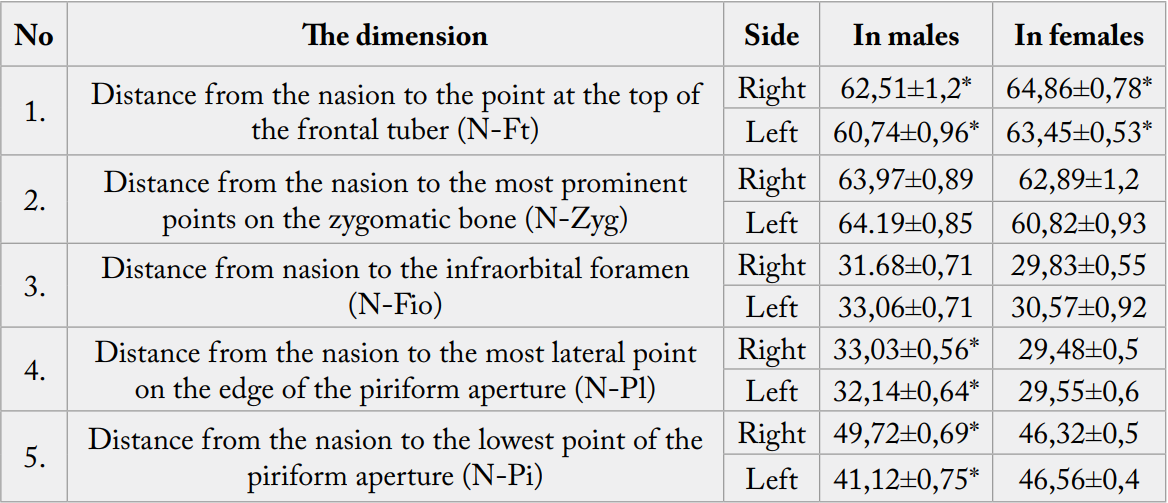Biography
Interests
Salmina Anastasiya & Valchkevich Dzmitry*
Department of Normal Anatomy, Grodno State Medical University, Grodno, Belarus
*Correspondence to: Dr. Valchkevich Dzmitry, Department of Normal Anatomy, Grodno State Medical University, Grodno, Belarus.
Copyright © 2020 Dr. Valchkevich Dzmitry, et al. This is an open access article distributed under the Creative Commons Attribution License, which permits unrestricted use, distribution, and reproduction in any medium, provided the original work is properly cited.
Abstract
Facial asymmetry is common in humans. Significant facial asymmetry causes both functional as well as esthetic problems. Precise diagnosis and treatment of facial asymmetry are important in orthodontics. The aims of this study were to determine the asymmetry characteristics of the upper part of the facial skull in adults. The results of the study show the asymmetry of upper part of skull in both, males and females, however, is more pronounced in males.
Introduction
The term “asymmetry” is used to make reference to dissimilarity between homologous elements, altering the
balance between structures. Facial asymmetry is common in the overall population and is often presented
subclinically [1,2]. Significant facial asymmetry causes both functional as well as esthetic problems [1,3,4].
The fact of asymmetry of the external structure of the human face and body was known to artists and sculptors
of the ancient world and was used to give expression and spirituality to their works. It is a fact, the facial
asymmetry is caused by changes in the soft tissues, muscles and bones of the skull [2,5-7]. Orthognathic
surgery is performed for the correction of the skull asymmetry. Additional surgical procedures may be
required to increase or reduce the volume of skeletal and soft tissue components on both sides to achieve better symmetry [2]. The study of this issue is relevant and dictated by the requests of anthropology,
neurosurgery, maxillofacial surgery and forensic medicine.
Aim of the Study
The aim of the research is to study the asymmetry of the “upper fan” of the facial skull at adults.
Materials and Methods
The material of investigation was 100 computer tomograms of skulls at adults in the age of 22-60 years old
(50 male and 50 female) belonging to residents of the Western Belarus. All the objects of research had no
mechanical damage of the skull and systemic diseases of the skeleton.
We used the “fan” method of craniometry to study the asymmetry of the facial skull. The “upper fan” allows assessing the asymmetry of the features in the upper part of the facial skull. On the both, right and left halves of the face, all distances were measured from the nasion, called N-point, which is located on the nasolabial suture. In the study, we have used other points also: the top of the frontal tuber (Ft), the zygon (Zyg) - the most prominent point on the zygomatic bone, the infraorbital foramen (Fio), the most lateral point of the piriform aperture (P1), and the lower point of the piriform foramen (Pi).
The digital data of the study were statistically processed with the help of the program Statistica 13.
Results and Discussion
Five sizes of the “upper fan” were measured in pairs (on the right/left) to identify the sizes asymmetry. As a result of measurements, in males the distance from the nasion to the point at the top of the frontal tuber (N-Ft) on the right side is 1.03 times longer than on the left one (p<0.05). In female, the same distance also is longer (in 1.02 times) on the right side. The distances N-Zyg and N-Fio did not differ significantly between males and females on the both sides (Table 1).
The distance from the nasion to the point on the right lateral edge of the piriform aperture (N-Pl) in male is significantly larger (in 1.03 times) than to the left one (p<0.05). In female, the same distance does not defer significant on both sides.
The distance from the nasion to the lowest point of the piriform aperture (N-Pi) in males was in 1.2 times larger on the right side than on the left (p<0.05). There is no any asymmetry of this distance in females (Table 1).

* - significant difference (p<0.05).
Conclusions
The results of the study show the asymmetry of upper part of skull in both, males and females. However, the
asymmetry of the facial skull is more pronounced in males.
Bibliography

Hi!
We're here to answer your questions!
Send us a message via Whatsapp, and we'll reply the moment we're available!